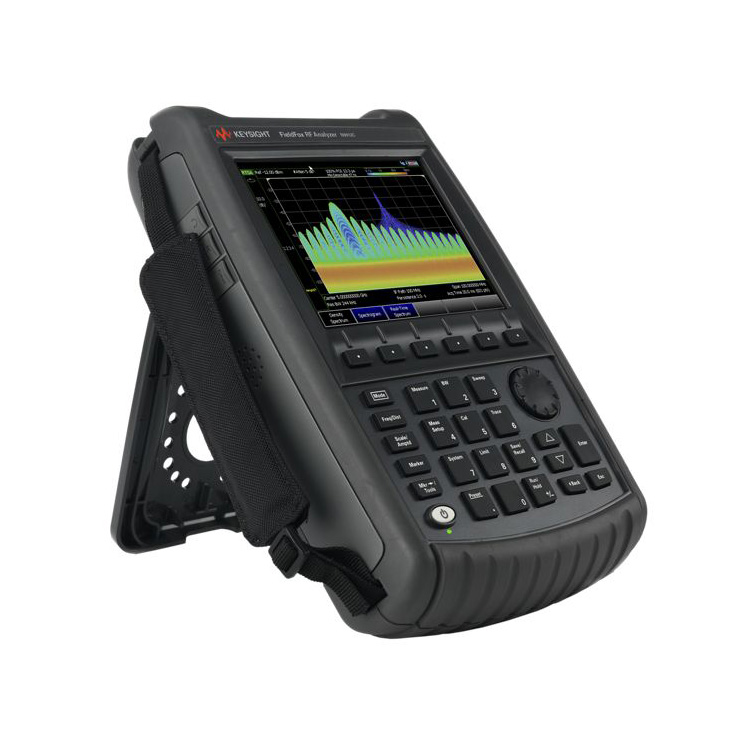Key Features of Signal and Spectrum Analyzers
2024-06-11
Signal and spectrum analyzers are essential tools used in electronics, telecommunications, and RF (radio frequency) engineering for analyzing and measuring the characteristics of electrical signals, radio waves, and communication systems. They provide valuable insights into the frequency, amplitude, phase, modulation, distortion, and other parameters of signals and waveforms, helping engineers troubleshoot, optimize, and verify the performance of electronic devices and systems. Here's an overview of signal and spectrum analyzers, including their principles of operation, key features, applications, and considerations for choosing the right analyzer for specific needs:
Principles of Operation:
1. Signal Analysis:
- Signal analyzers are used to analyze electrical signals across a wide range of frequencies. They typically consist of a frontend RF section that downconverts the input signal to an intermediate frequency (IF), followed by digital signal processing (DSP) to extract and analyze various signal parameters.
2. Frequency Domain Analysis:
- Spectrum analyzers are used to analyze the frequency domain characteristics of signals. They display the amplitude (power) of signal components as a function of frequency, allowing engineers to identify frequency components, harmonics, spurious signals, and interference.
Key Features of Signal and Spectrum Analyzers:
1. Frequency Range:
- Signal and spectrum analyzers cover a wide frequency range, from audio frequencies (Hz) to microwave and millimeter-wave frequencies (GHz), depending on the application and requirements.
2. Frequency Resolution:
- Analyzers offer adjustable frequency resolution bandwidth (RBW) settings to control the frequency resolution and measurement accuracy, allowing users to focus on specific frequency ranges or narrowband signals.
3. Dynamic Range:
- The dynamic range of an analyzer determines its ability to measure signals with a wide range of amplitudes accurately. Higher dynamic range analyzers can accurately measure both weak and strong signals without distortion or saturation.
4. Sensitivity:
- Sensitivity refers to the minimum detectable signal level that an analyzer can measure. Higher sensitivity analyzers can detect weaker signals with lower noise floors, making them suitable for applications requiring high sensitivity and low-level signal analysis.
5. Speed and Sweep Time:
- Analyzers offer fast sweep times and real-time analysis capabilities to capture and analyze rapidly changing signals and transient events in dynamic environments.
6. Modulation Analysis:
- Advanced analyzers feature modulation analysis capabilities to analyze modulated signals, demodulate analog and digital modulation formats (e.g., AM, FM, PM, QAM), and measure modulation characteristics such as modulation depth, frequency deviation, and modulation error.
7. Signal Processing Features:
- Analyzers may include built-in signal processing functions such as FFT (Fast Fourier Transform), filtering, averaging, peak detection, and marker functions for in-depth signal analysis and measurement.
8. User Interface:
- Analyzers feature intuitive user interfaces with graphical displays, touchscreen controls, customizable settings, and measurement presets for ease of operation and efficient data analysis.
Applications of Signal and Spectrum Analyzers:
1. RF and Wireless Communications:
- Analyzing RF signals, wireless communication systems, and modulation schemes in applications such as cellular networks, Wi-Fi, Bluetooth, RFID, satellite communication, and radar systems.
2. Broadcasting and Telecommunications:
- Monitoring and analyzing broadcast signals, TV and radio broadcasting, telecommunications networks, satellite TV, cable TV, and IPTV systems for signal quality, interference, and spectrum management.
3. Electronic Design and Testing:
- Characterizing electronic components, circuits, and systems during design, development, testing, and troubleshooting stages, including RF amplifiers, filters, mixers, oscillators, and antennas.
4. Spectral Analysis:
- Analyzing spectral characteristics of signals in applications such as audio processing, acoustic engineering, environmental monitoring, vibration analysis, and spectral imaging.
5. EMI/EMC Testing:
- Conducting electromagnetic interference (EMI) and electromagnetic compatibility (EMC) testing to assess the electromagnetic emissions and susceptibility of electronic devices and systems to ensure compliance with regulatory standards.
6. Field and Site Surveys:
- Conducting field measurements, site surveys, and spectrum monitoring to analyze RF environments, identify interference sources, and optimize radio frequency allocation and spectrum utilization.
Considerations for Choosing Signal and Spectrum Analyzers:
1. Frequency Range and Resolution:
- Select an analyzer with a frequency range and resolution suitable for the application and frequency bands of interest, ensuring coverage of relevant signal frequencies.
2. Dynamic Range and Sensitivity:
- Choose an analyzer with sufficient dynamic range and sensitivity to measure signals accurately across a wide range of amplitudes and noise levels encountered in the application.
3. Modulation Analysis Capabilities:
- If analyzing modulated signals, ensure the analyzer supports the modulation formats, bandwidths, and analysis capabilities required for the specific modulation schemes used in the application.
4. Speed and Sweep Time:
- Consider the analyzer's speed and sweep time requirements to capture and analyze signals in real-time or fast-changing environments, minimizing measurement time and maximizing productivity.
5. Portability and Form Factor:
- Depending on the application, consider the portability, size, weight, and form factor of the analyzer, especially for field measurements, site surveys, and mobile applications.
6. User Interface and Software:
- Evaluate the analyzer's user interface, ease of operation, software features, data analysis capabilities, and compatibility with external software tools and interfaces for seamless integration and workflow efficiency.
7. Cost and Budget:
- Consider the cost, budget, and return on investment (ROI) when selecting an analyzer, balancing performance, features, and price to meet the application requirements and budget constraints effectively.
Conclusion:
Signal and spectrum analyzers are indispensable tools for analyzing and measuring the characteristics of electrical signals, radio waves, and communication systems across a wide range of applications in electronics, telecommunications, RF engineering, and beyond. By understanding the principles of operation, key features, applications, and considerations for choosing the right analyzer, engineers and technicians can effectively analyze, optimize, and troubleshoot electronic devices and systems, ensuring reliable performance, compliance with standards, and successful deployment in diverse environments.



